We could all use a little more of the beneficial bacteria in our bodies—you know, the probiotics. Probiotics are the friendly bacteria taking up residence in our digestive tracts. They do a lot of important work for keeping our guts—and our immune systems—healthy and balanced.
Many people who suffer from IBS [source] or chronic dyspepsia [source] find daily probiotic intake to be helpful, and it’s also especially useful in the treatment and prevention of more acute digestive woes, whether caused by antibiotic use [source] or infection [source].
Probiotics are also beneficial for oral [source] and vaginal health [source], weight loss [source], and recent research reveals their effectiveness for bone loss, some inflammatory dermatologic problems and skin aging, neurologic and emotional conditions, and quite a few other diseases [source].
6 Ways to Make a Probiotic Smoothie
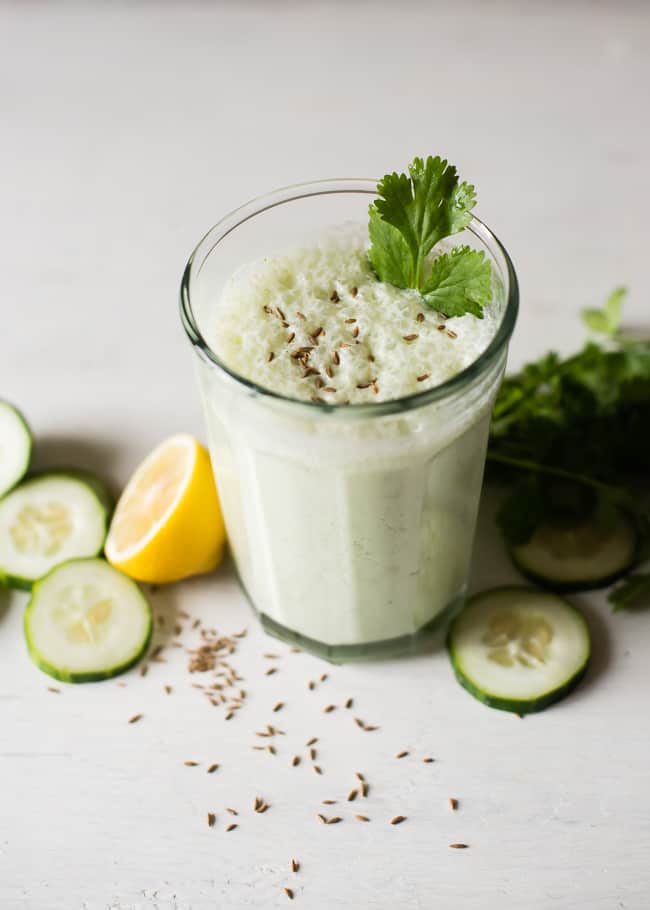
There’s a myriad of ways to get your good bacteria. You can up your intake of foods with natural probiotics, like homemade kimchi or sauerkraut, or try a probiotic supplement or drink.
But guess what’s one of our favorite options? Smoothies! Here are 6 delicious ways to make a probiotic smoothie.
1. Unsweetened Yogurt
Swap the milk in your smoothies for plain yogurt, which can improve the symptoms of bloating. It’s pre-digested, so the lactose is already broken down, making it easier for the body to handle.
Avoid low-fat and flavored versions or other high-sugar content brands. Plain yogurt is delicious and more nutritious, and there is no need for added sugars when you can add sweetness to your smoothie with fresh fruit or a drizzle of honey.
Try these recipes:
2. Probiotic protein powder
When you up your intake of protein, fiber, probiotics, and living, fermented foods, you can start to curb cravings and sugar intake. Find a protein powder that delivers not only protein but also probiotics, prebiotic soluble fiber, and digestive enzymes in an easily mixable form that helps balance the good and bad bacteria in the digestive tract.
Plus, a probiotic protein powder blend is a great way to add good bacteria to your smoothies if you can’t do dairy or you’re not a fan of the tanginess of yogurt or kefir.
Try this recipe:
Blueberry Pre- & Probiotic Smoothie
- 1 scoop protein powder
- 8 ounces unsweetened almond milk
- ½ cup frozen blueberries
- 1 tablespoon chia seeds
- ½ an avocado
3. Kefir
The probiotics in kefir can help normalize digestive troubles, and one 8-ounce serving of kefir delivers about 20 percent of your daily calcium needs, as well as good amounts of vitamin B12, biotin, phosphorus, and a whopping 10.5 grams of protein.
Those who are lactose intolerant have an easier time digesting kefir since the lactose has been fermented. If you don’t love the taste of kefir, try a probiotic milk.
Try these recipes:
Berry-Almond Smoothie
- ¾ cup plain kefir
- 1 tablespoon almond butter
- ½ tablespoon chia seeds
- ½ cup raspberries
- Ice
Banana-Pumpkin Smoothie
- ½ cup pumpkin puree
- 1 banana
- ½ cup plain kefir
- 2 dates
- ½ teaspoon pumpkin pie spice
- ¼ teaspoon cinnamon
- 1 tablespoon maple syrup (optional)
- Ice
4. Coconut Yogurt or Kefir
Coconut yogurt is full of good, gut-friendly bacteria and dietary fiber, and coconut kefir is easy to make at home. It does not contain protein, like cow’s milk yogurt does, but it does have medium-chain fatty acids.
The extra fat will help keep you feeling satisfied, but if you miss the protein, add some protein powder or 1–2 tablespoons of chia seeds, which will also make the smoothie even thicker.
Try these recipes:
5. Raw Apple Cider Vinegar
Not only is organic, raw, unpasteurized and unfiltered apple cider vinegar, such as Bragg’s, great for salad dressing, skincare, and boosting the immune system (and many other household uses), it’s a natural probiotic. Drinking ACV can be tough because it has a super strong taste, so try hiding it in an elixir or smoothie recipe.
Try these recipes:
Apple Cider Vinegar Protein Smoothie
- 1 cup baby spinach
- ½ cup frozen zucchini
- 1 apple, chopped
- 1 teaspoon cinnamon
- 1 tablespoon apple cider vinegar
- 1 tablespoon walnut butter
- 1 scoop collagen peptides
- 1 cup water
ACV Mango Smoothie
- 1 cup frozen mango chunks
- 2 tablespoons raw cashews
- 1 teaspoon to 1 tablespoon apple cider vinegar
- 1 cup coconut water
- 1 scoop vanilla protein powder
- ½ cup ice
6. Kombucha
Have some kombucha in the fridge? (If not, learn how to make your own kombucha here!)
Add a serving of it to your next smoothie for a dose of healthy bacteria and probiotics. The enzymes and antioxidants in this fermented tea support the immune system and promote a healthy digestive system.
📖 Recipe
Raspberry Kombucha Smoothie
Ingredients
For the Raspberry Layer
- 1 cup frozen raspberry (thawed)
- 1 tablespoon chia seeds
For the Kombucha Layer
- ½ cup kombucha
- 1-½ cups oat milk
- 1 tablespoon rolled oats
- 1 tablespoon almond butter
- 1 banana (peeled, chopped)
Instructions
- Add the raspberries into a medium bowl and mash with a fork.
- Sprinkle in the chia seeds, then mix to incorporate.
- Set aside for 10 minutes to allow the chia seeds to absorb the liquid and turn the mixture into jelly.
- Meanwhile, prepare the kombucha smoothie by adding the ingredients into a blender and processing to get a smooth, creamy liquid.
- Divide the raspberry chia jelly into two serving glasses. Then pour the kombucha smoothie evenly over the top.
- Mix and serve.
Nutrition
This article was medically reviewed by Dr. Gina Jansheski, a licensed, board-certified physician who has been practicing for more than 20 years. Learn more about Hello Glow's medical reviewers here. As always, this is not personal medical advice and we recommend that you talk with your doctor.
232
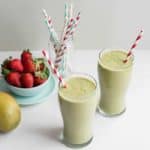
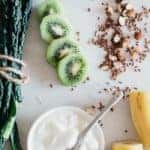
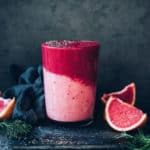
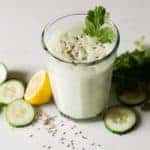
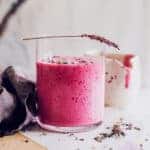



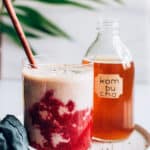

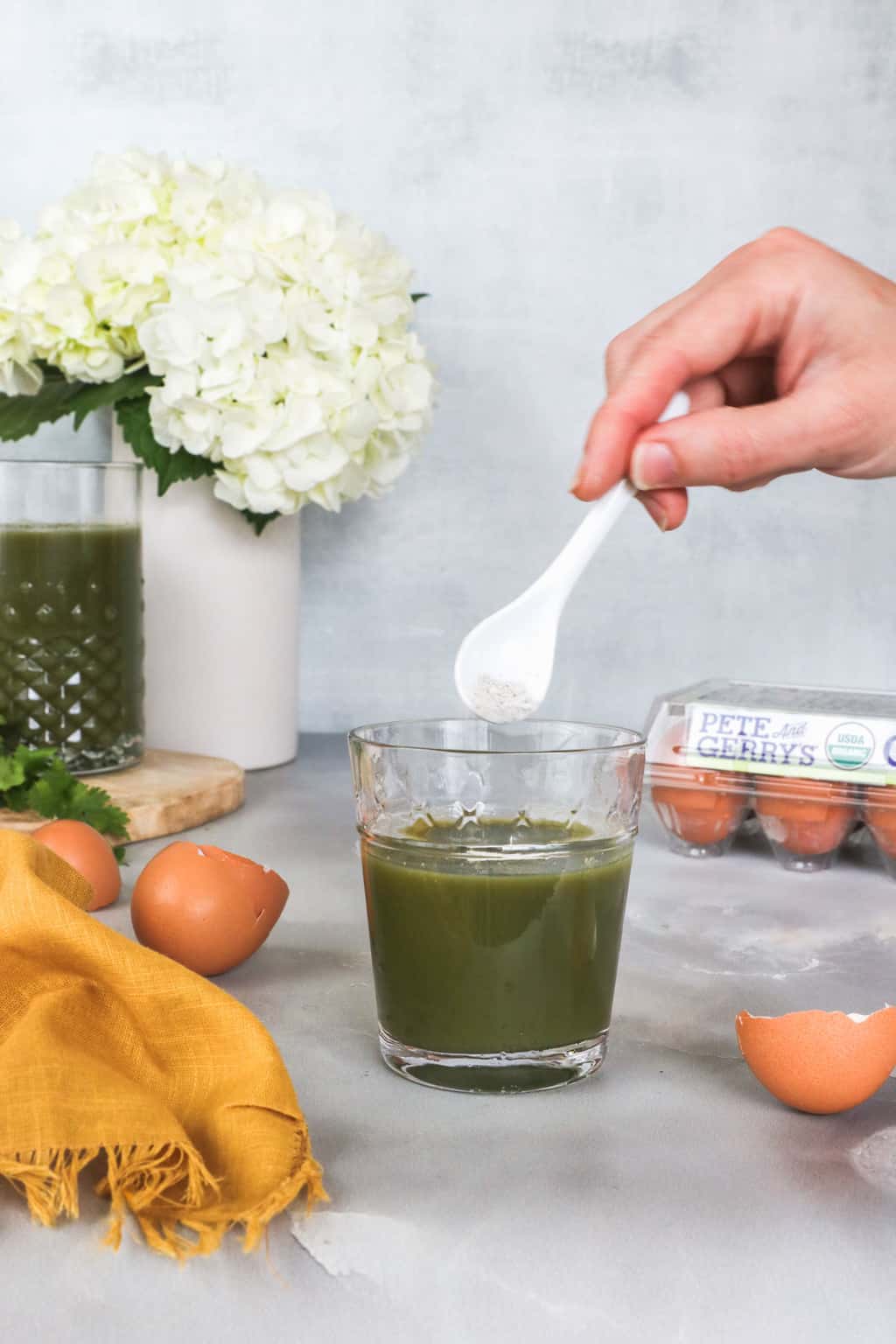
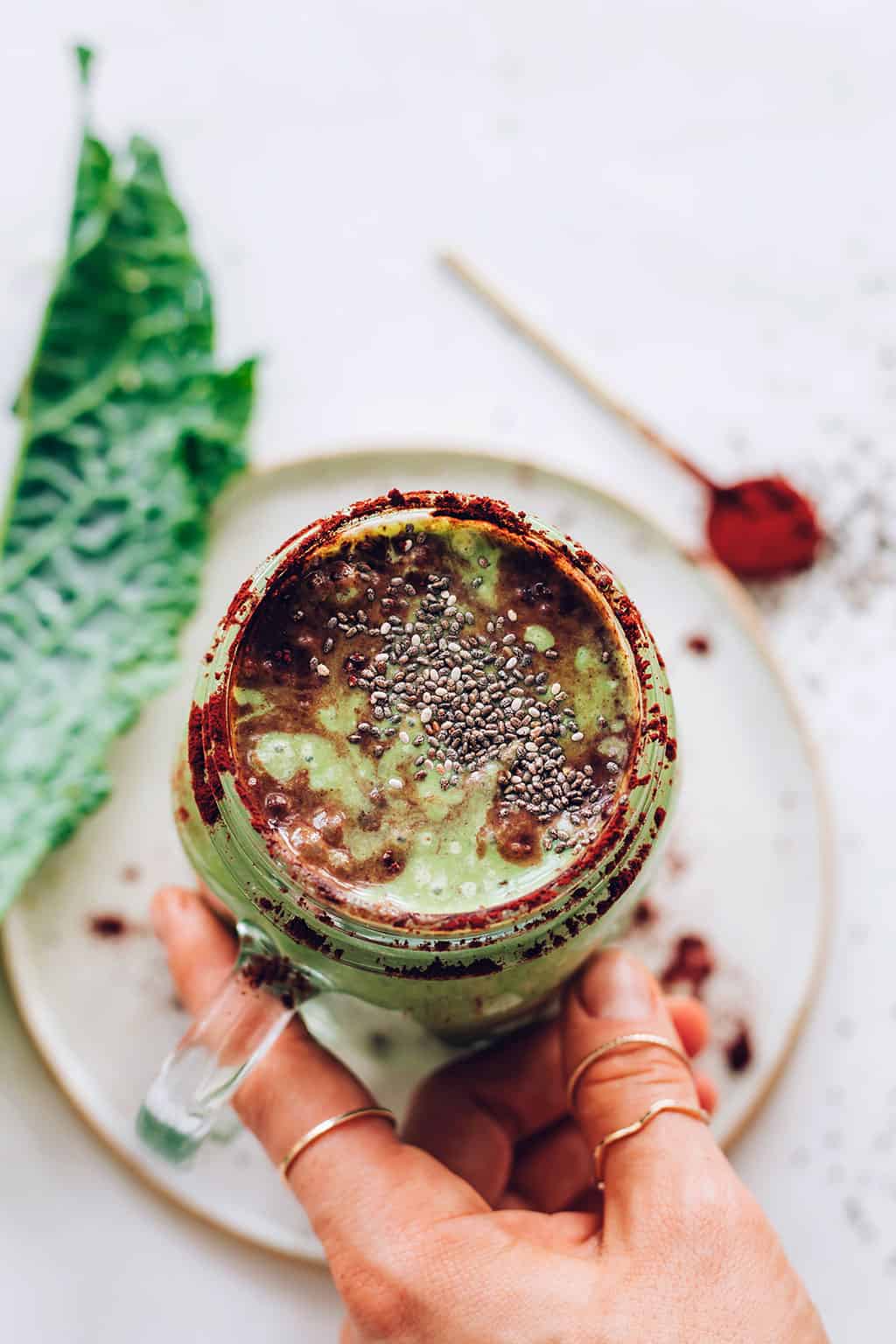
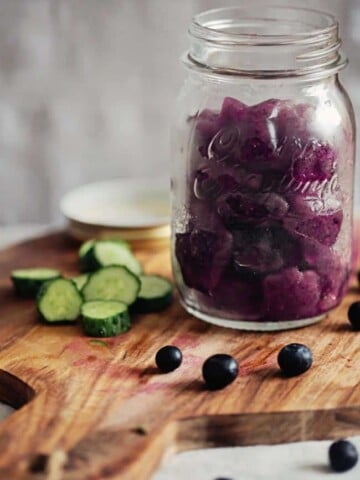
Leave a Comment